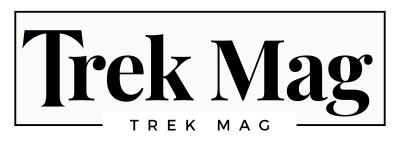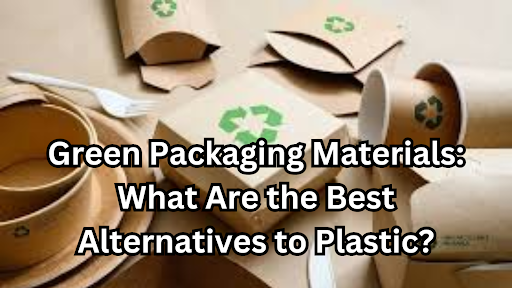As environmental concerns over plastic pollution grow, the demand for green packaging materials has surged across industries. The food and beverage sector, in particular, is under increasing pressure to adopt eco-friendly solutions to meet consumer and regulatory expectations. Businesses are seeking alternatives that maintain functionality while reducing environmental impact, and Sonoco Asia, a leader in sustainable packaging solutions, is at the forefront of this transformation.
In this article, we will explore the best alternatives to traditional plastic for green packaging, their benefits, challenges, and how Sonoco Asia is innovating in this space.
The Urgency for Green Packaging Alternatives
Plastic has long dominated the packaging industry due to its durability, versatility, and low cost. However, its environmental impact, from production to disposal, has made it a target for reform. The facts are hard to ignore:
- Over 300 million tons of plastic waste are produced annually, with a significant portion ending up in landfills or the ocean.
- Plastics can take up to 1,000 years to degrade, releasing harmful microplastics in the process.
- Governments worldwide are enacting stricter regulations to curb single-use plastics.
Green packaging alternatives are no longer optional—they are essential for companies looking to align with consumer values and sustainability goals.
What Makes a Packaging Material “Green”?
Green packaging materials are designed to minimize their environmental footprint. The key attributes of such materials include:
- Renewability: Derived from natural, renewable resources like plants or agricultural byproducts.
- Recyclability: Materials that can be reprocessed into new products.
- Biodegradability: Ability to decompose naturally without harming the environment.
- Energy Efficiency: Produced using less energy and fewer resources.
Sonoco Asia specializes in green packaging solutions that embody these principles, offering businesses eco-friendly alternatives tailored to their needs.
Top Alternatives to Plastic for Green Packaging
1. Bioplastics
Bioplastics are derived from renewable sources like cornstarch, sugarcane, and vegetable oils, making them a popular substitute for conventional plastics.
Advantages:
- Can be designed to be biodegradable or compostable.
- Offers the same durability and flexibility as traditional plastics.
- Reduces dependency on fossil fuels.
Applications:
- Food containers, cutlery, and flexible films.
Sonoco Asia provides cutting-edge bioplastic solutions that maintain performance standards while minimizing environmental impact. Their bioplastics are ideal for both single-use and reusable packaging applications.
2. Paper and Cardboard
Paper and cardboard are among the most versatile and widely used green packaging materials. Made from renewable wood pulp, they are recyclable and biodegradable.
Advantages:
- Easily customizable and cost-effective.
- Decomposes within weeks in natural environments.
- Lightweight, reducing transportation emissions.
Applications:
- Takeaway boxes, food wraps, and beverage carriers.
Sonoco Asia offers high-quality paper-based packaging with water-resistant coatings and innovative designs that cater to the food and retail industries.
3. Glass
Glass is an infinitely recyclable material, making it one of the most sustainable food packaging options available.
Advantages:
- Non-toxic and preserves food quality without leaching chemicals.
- Durable and reusable.
- Aesthetically appealing for premium products.
Applications:
- Beverage bottles, food jars, and condiment containers.
Glass is heavier than most alternatives, increasing transportation costs and emissions.
4. Aluminum and Metal
Aluminum is highly recyclable, with approximately 75% of all aluminum ever produced still in use today.
Advantages:
- Lightweight and durable.
- Protects products from light, air, and moisture.
- High recycling rates with minimal degradation in quality.
Applications:
- Beverage cans, food tins, and foil wraps.
By integrating lightweight aluminum solutions, Sonoco Asia helps brands achieve sustainability goals while maintaining product integrity.
5. Plant-Based Fibers
Materials like bamboo, hemp, and sugarcane bagasse are emerging as viable alternatives for green packaging.
Advantages:
- Fast-growing and renewable resources.
- Biodegradable and compostable.
- Strong and durable for a range of applications.
Applications:
- Plates, bowls, and takeaway containers.
Sonoco Asia collaborates with manufacturers to develop packaging solutions using plant-based fibers, ensuring minimal environmental impact and optimal performance.
6. Edible Packaging
Edible packaging, made from ingredients like seaweed and rice, offers a zero-waste solution by allowing consumers to eat the packaging itself.
Advantages:
- Completely eliminates packaging waste.
- Adds value by enhancing the consumer experience.
Applications:
- Wrappers for snacks, food pouches, and beverage pods.
While innovative, edible packaging is still in its infancy and faces hurdles in scalability and shelf-life stability.
Benefits of Adopting Green Packaging
Switching to green packaging materials offers businesses multiple benefits, including:
- Enhanced Brand Reputation: Consumers are more likely to support brands committed to sustainability.
- Regulatory Compliance: Meeting global and local environmental standards avoids legal penalties.
- Cost Savings in the Long Run: While initial investments may be higher, green packaging reduces waste management and disposal costs.
- Environmental Impact: Contributes to reducing plastic pollution and conserving natural resources.
Challenges in Transitioning to Green Packaging
Despite its advantages, transitioning to green packaging comes with challenges:
- Cost: Sustainable materials are often more expensive than traditional plastics.
- Supply Chain Constraints: Limited availability of green materials can disrupt supply chains.
- Consumer Behavior: Educating consumers about the benefits and proper disposal of green packaging is essential.
Sonoco Asia addresses these challenges by offering scalable, cost-effective solutions and providing education to both businesses and consumers.
Sonoco Asia: Pioneering Green Packaging Solutions
As a leader in the packaging industry, Sonoco Asia is committed to sustainability through innovation. Their green packaging solutions are tailored to meet the needs of businesses across industries, ensuring a seamless transition to eco-friendly practices.
1. Customized Solutions:
Sonoco Asia works closely with clients to develop bespoke packaging that aligns with their sustainability goals.
2. Advanced R&D:
By investing in research and development, Sonoco Asia continually introduces innovative materials and designs that redefine green packaging.
3. Global Expertise:
With a presence in Asia and beyond, Sonoco Asia leverages global expertise to offer solutions that cater to diverse market demands.
4. Commitment to Education:
Sonoco Asia not only provides green packaging but also educates partners on sustainable practices, fostering a culture of responsibility across the supply chain.
The Future of Green Packaging
The shift toward green packaging is irreversible. As technologies advance and consumer preferences evolve, sustainable materials will continue to dominate the market. Businesses that invest in green packaging today are not only contributing to a healthier planet but are also future-proofing their operations.
With companies like Sonoco Asia leading the charge, the path to sustainability is clearer than ever. By offering innovative, cost-effective solutions, Sonoco Asia empowers businesses to embrace green packaging without compromising on quality or functionality.
Conclusion
The era of green packaging is here, and the best alternatives to plastic are paving the way for a more sustainable future. From bioplastics to edible packaging, the options are diverse and promising. However, achieving true sustainability requires collaboration between businesses, consumers, and industry leaders like Sonoco Asia.
With the rise of digital communication, platforms like whatsapp are also playing a role in spreading awareness about eco-friendly solutions. Businesses can leverage these channels to educate consumers about sustainable choices and promote responsible packaging practices. By adopting eco-friendly materials and practices, businesses can meet the demands of today’s environmentally conscious consumers while leaving a positive legacy for future generations. Let’s embrace the possibilities of green packaging and move closer to a world free of plastic waste.








